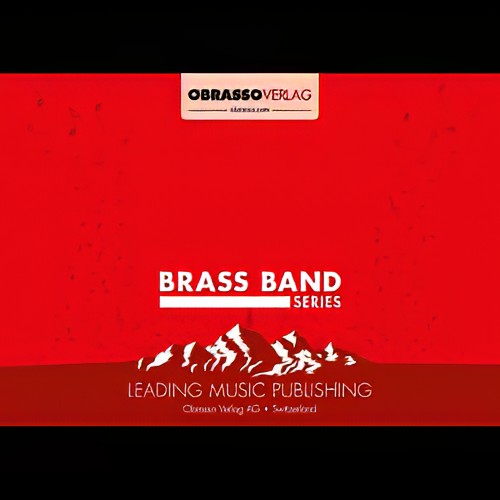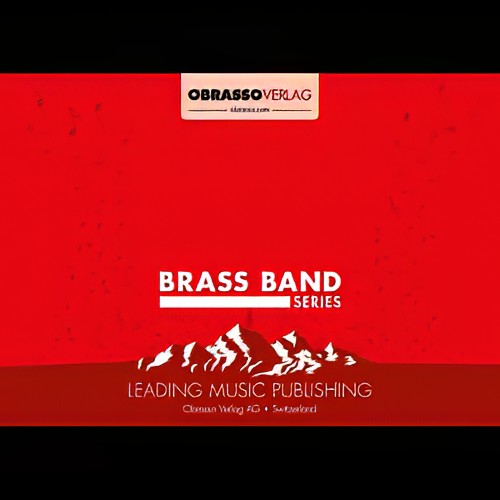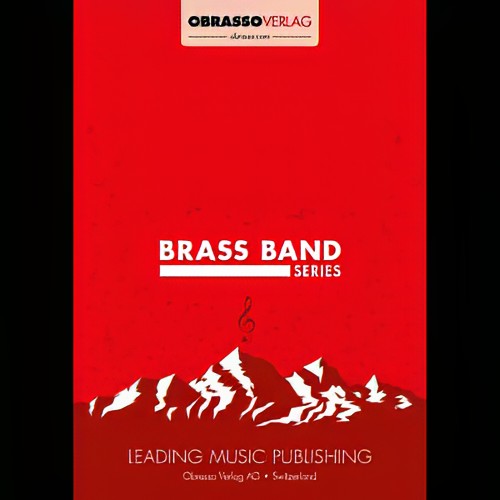Results
-
 £54.99
£54.99Ballets (Brass Band - Score and Parts)
During the second half of the 16th century, Giovanni Giacomo Gastoldi composed almost entirely sacred works, however it was with his Balletti, not published until 1591 and 1594, that he gained fame and recognition. The homophonic structure and simple melodies conveyed a charming sense of naivety that became so popular during this period. Robert van Beringen has arranged Amor Vittorioso, La Sirena, L'Innamorato and L'ardito with five part flexible instrumentation. 05:00
Estimated dispatch 7-14 working days
-
 £54.20
£54.20Brindisi (Cornet and Euphonium Duet with Brass Band - Score and Parts) - Verdi, Giuseppe - Newsome, Roy
from La TraviataDuration: 3.15
Estimated dispatch 7-14 working days
-
 £50.90
£50.90Brindisi (Vocal (Soprano/Tenor) Duet with Brass Band - Score and Parts) - Verdi, Giuseppe - Fernie, Alan
From La Traviata
Estimated dispatch 7-14 working days
-
 £50.90
£50.90IMPOSSIBLE DREAM, THE (Brass Band) - Leigh, Mitch - Smith, Sandy
from 'The Man from La Mancha'. Grade: easy-medium
Estimated dispatch 7-14 working days
-
 £58.60
£58.60ITALIAN FANTASY (Brass Band) - Fernie, Alan
Medium Includes: Nessum Dorma; La Danza; O Sole Mio; Brindisi; Tourna A Surriento; Funiculi Funicula; Triumph March Aida
Estimated dispatch 7-14 working days
-
 £54.20
£54.20Opera Pops (Brass Band - Score and Parts) - Woodfield, Ray
Slightly reduced Brass Band instrumentation (no rep cornet, no 2nd horn, no 2nd trombone part)Includes:Brindisi (La Traviata)Carnival of VeniceAnvil Chorus (Il Trovatore)Toreador's Song (Carmen)O Mio Babbino Caro (Gianni Schicchi)Chorus of the Hebrew Slaves (Nabucco)Grand March (Aida)
Estimated dispatch 7-14 working days
-
 £50.90
£50.90The Impossible Dream (Cornet and Flugelhorn or Cornet Duet with Brass Band - Score and Parts) - Darion & Leigh - Fernie, Alan
From the Man of La ManchaDuration: 4.15
Estimated dispatch 7-14 working days
-
 £40.00
£40.00The Nutcracker 'Sweet' (Brass Band - Score and Parts) - Miller, Glenn - Freeh, Mark
The Tchaikovsky Classic a la big band!Tchaikovsky's ballet, The Nutcracker, is a fairy-ballet in two acts, three tableaux and was composed in 1891/2. It is based on The Nutcracker and the Mouse King, a story by E.T.A. Hoffmann (1816). Mark Freeh has arranged this Tchaikovsky classic for brass band.Suitable for Advanced Youth/3rd Section Bands and aboveDuration: 12.00
Estimated dispatch 7-14 working days
-
 £54.20
£54.20TIGER RAG (Brass Band) - La Rocca, Nick - Roberts, Stephen
Medium
Estimated dispatch 7-14 working days
-
£40.00
UNSQUARE DANCE (Brass Band - Score and Parts) - Brubeck, Dave - Freeh, Mark
Dave Brubeck, the American jazz pianist, has contributed a huge amount of material to the genre, responsible for many titles now so often referred to as 'jazz standards'. Brubeck has experimented with irregular time signatures throughout his musical career including 'Pick Up Sticks' (which is in 6/4 time), Blue Rondo a la Turk (in 9/8 but over four beats as 2.2.2.3) and of course his most famous work, 'Take Five' (in 5/4!). His 'Unsquare Dance' (in 7/4 time) has been expertly arranged for brass band by Mark Freeh.Duration: 4.00
Estimated dispatch 7-14 working days
